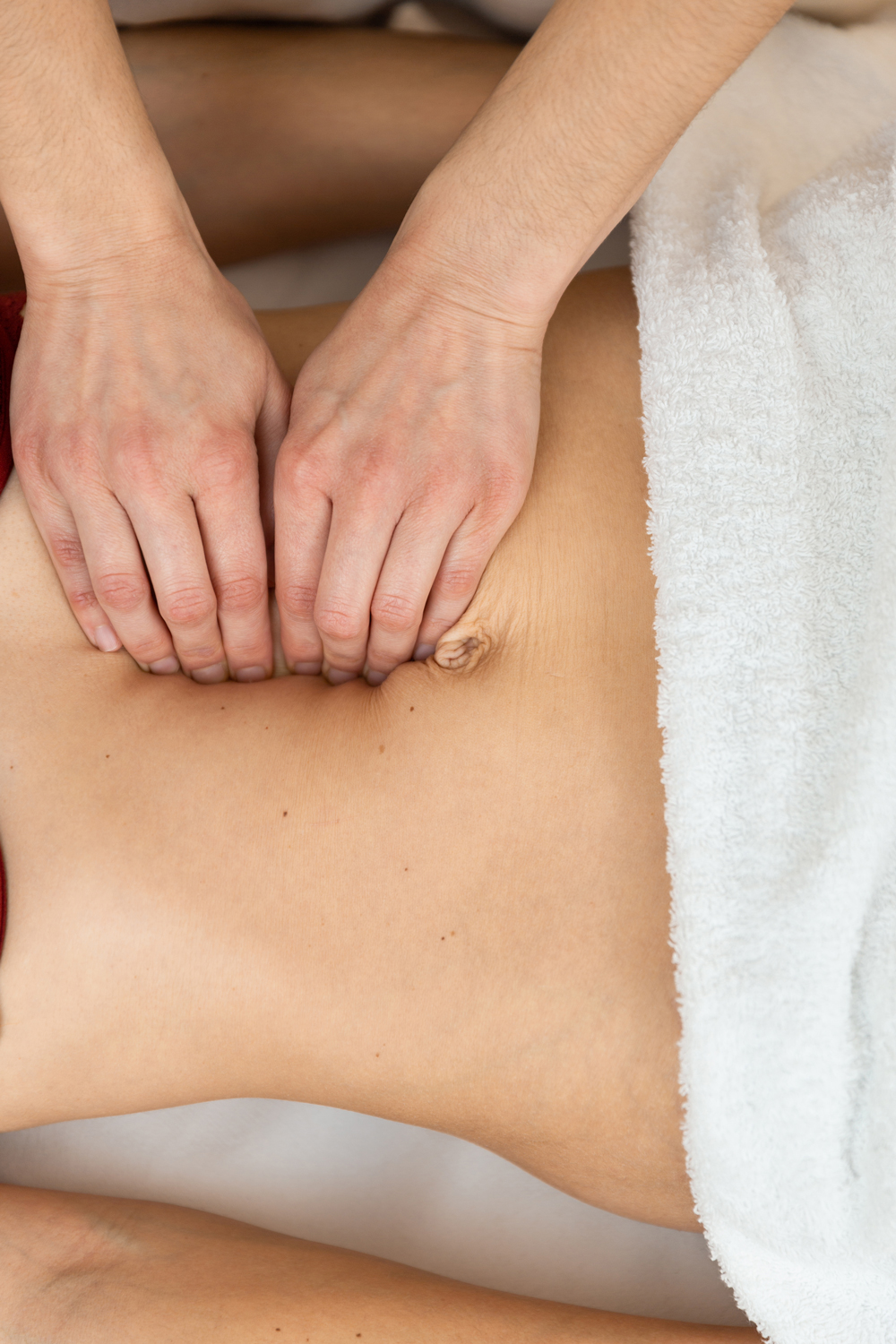What Abdominal Separation Is and How to Safely Recover through Exercise
This article is proudly brought to you in partnership with Move It Mama.
While we love to hate the term ‘mummy tummy’, it can accurately describe what people feel they’re left with after having children. And, no matter how much exercise they do, they can’t seem to improve it.
Move It Mama’s Jess Mizzi explains that abdominal separation during pregnancy is normal, and exercise can be fundamental in healing a diastasis postnatally. However, many people perform the wrong type of exercises, and even daily movement, postural and breathing habits may be preventing someone from healing. Here she shares her advice on how to correct that.
Firstly, what is an ab separation?
Diastasis recti (DR) is the medical name for the condition commonly referred to as abdominal separation. DR occurs when the linea alba (LA), the connective tissue connecting the two sides of the rectus abdominis (the ‘six pack’) stretches and widens. DR is normal; every person going through a pregnancy will have a diastasis to some degree, as the LA stretches to accommodate a growing baby. Postnatally, a diastasis can heal on its own, but for some, a considerable rehab effort, or even surgery, is needed.
How do I know if I have an ab separation?
DR is defined as a separation of greater than 2cm in width – though it can be much wider – and when a person cannot generate tension in their core. For some, a mild separation won’t cause any issues, but for others, it can be quite problematic. Symptoms can include bulging, back pain, poor posture, pelvic floor dysfunction i.e. incontinence or constipation, and more.
After the linea alba (LA) has stretched during pregnancy, it can be left slack. Postpartum, the stomach may bulge or appear lumpy, as the LA struggles to properly support the body’s internal organs. Exercises such as floor-based planks or a heavy squat can place too much pressure on the LA and can often exacerbate the issue. Sometimes even coughing and sneezing can be problematic when dealing with a diastasis.
You can assess yourself for DR (there are many resources online), however we strongly advise visiting a specialist physiotherapist if concerned about a diastasis for a proper diagnosis.
What can I do about it?
If you’re currently pregnant, know that a separation in pregnancy is natural and it needn’t be a reason to stop exercising. We advise continuing to exercise (if cleared), with consideration to the increased pressure on the abdominals. For example, adjusting plank exercises by using an incline such as a dining table or wall, working with the breath (e.g. avoiding breath holding), and prioritising exercises that benefit and incentivise correct alignment and posture.
ADVERTISEMENT
EXERCISE EXAMPLE: WALL PRESS UPS
Focus on an audible exhale on the way back up while simultaneously lifting the pelvic floor.
EXERCISE EXAMPLE: HITCH-HIKER BACK PULL
Bend over at the hips (hinge/fold), with legs mostly straight but a soft knee. With your back straight, arms out at the side and thumbs pointing upward, pull the arms up and down. With every pull, squeeze the shoulder blades together and down. Exhale purposefully when ‘pulling’; each pull is one rep.
If postpartum, try this lying on your stomach instead.
Postnatally, the focus should be on rebuilding strength and tension in the LA and in the deepest layer of the core (the transverse abdominals or TVA), as well as considerations to lifestyle habits such as posture and quality nutrition. Rebuilding integrity in the LA and progressively strengthening the TVA will not only help in ‘closing the gap’, but also in regaining control, strength and functionality of the abdominals. An exercise programme should prioritise encouraging the core unit to function as a collective, meaning the diaphragm, pelvic floor, abdominals working in sync, and progressive deep core work to improve tension.
EXERCISE EXAMPLE: HEEL SLIDES
Lying on your back with your feet on the floor and knees up, slide one foot out until it’s long on the ground, and slide it back in. Work with the breath throughout, focusing on a purposeful exhale when bringing the foot back towards your body. Alternate legs.
Form and overall body alignment is also fundamental when healing a diastasis. If the body isn’t aligned as it should be, it won’t allow the core system to optimally function. Readjusting to correct posture – neutral spine, ribs over pelvis – can therefore be crucial in healing a diastasis.
Other considerations in daily life should also be factored in, such as avoiding getting out of bed from a back lying position and instead rolling to the side as this places less outward pressure on the core. Also, avoid holding the breath while exercising or in other activities as this puts extra pressure on the abs and pelvic floor.
EXERCISE EXAMPLE: WALKING
Walking can be such great exercise postpartum not just for the mental benefits but the physical benefits too. Unlike cycling, for example, walking is fantastic for working towards correct body alignment and improving posture.
Whether pregnant or postpartum, we advise seeing a specialist physiotherapist for clarification and guidance with exercise, and also prioritising pregnancy or postpartum tailored sessions within your regime.
Move it Mama has been delivering pregnancy sessions for three years, and now delivers postpartum specific rehabilitation style sessions that will help you with abdominal separation – please ensure you are cleared by a professional first. We’d love you to join us!
"*" indicates required fields





